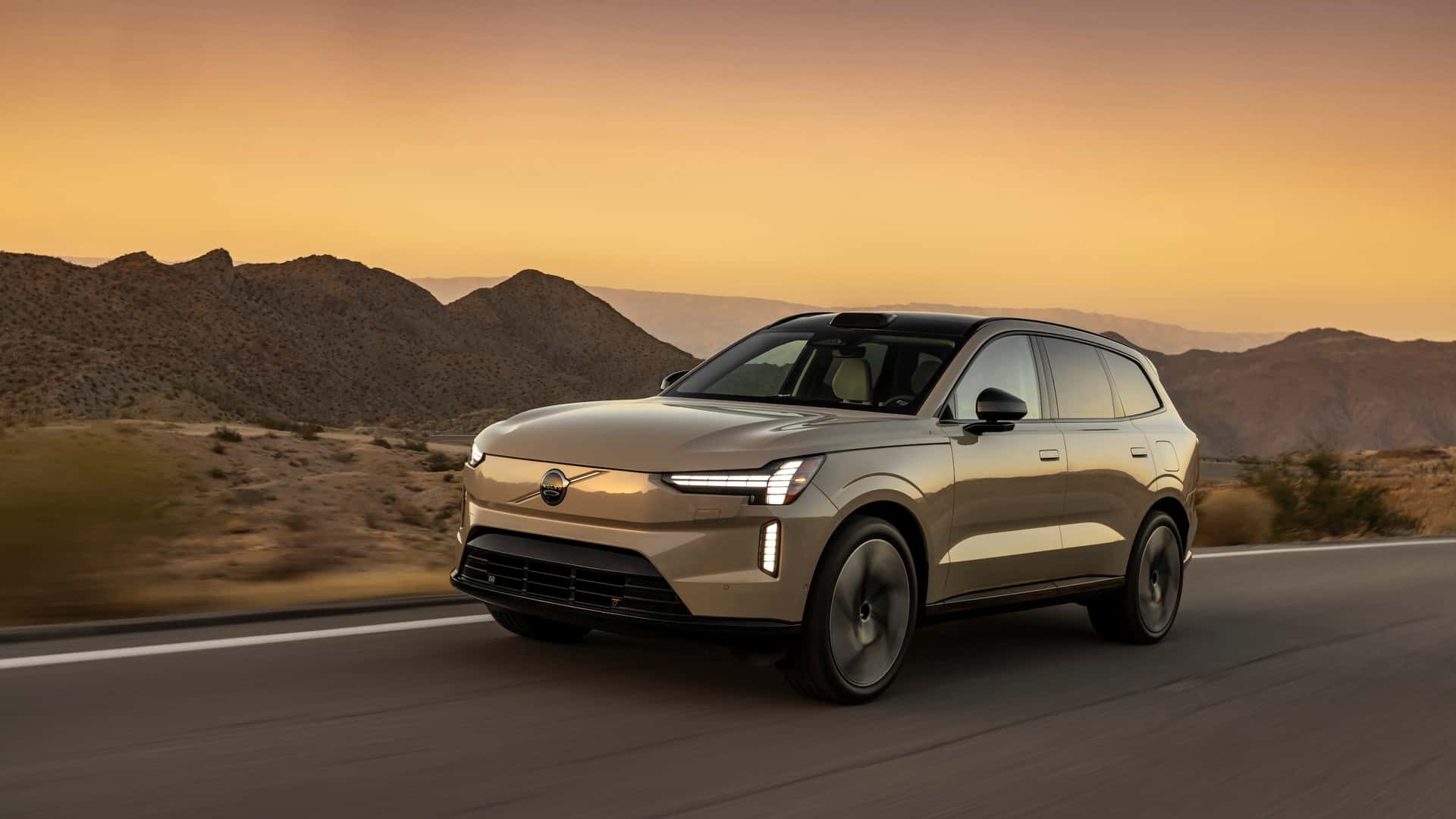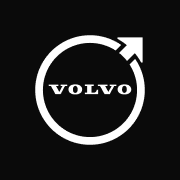It’s been very quiet regarding when the MY26 will appear on the website, and more importantly, what changes are in store. We’ve been teased about 800v, NACS for NA market, Orin, and a few other features based on Volvo evolution. Does anyone have any new updates on what’s coming?

Any news on MY26?
1 reading
61 - 80 of 87 Posts
I really wish they would enable us to sign lease paperwork on the 4 to get the tax credit before Sept 30… the website only lets you order for cash payment.US Polestar 4 deliveries will begin in November, but that will be a 2026 model. So they'll have two models available, but one will be a 2025 and the other a 2026. 🤣
To be honest, I'll believe that they're going to deliver any P4s when I see them at a dealer.I really wish they would enable us to sign lease paperwork on the 4 to get the tax credit before Sept 30… the website only lets you order for cash payment.
I don't even know that they've built any of them yet or of the South Korean plant is operational, or if the current tariff situation with SK makes sense for them to import them even if the plant is operational.
So I won't be shocked if come mid-October, Polestar announces another delay to the P4 deliveries.
2025 Polestar P3, PPP, 2/22/25, Snow, Jupiter, Built SC, Tints/Ceramic/All Weather
Joined
·
560 Posts
I should’ve stated more available battery to drive the motors since less battery management overhead is required (lower thermal temps to charge and under load, etc)nope. not higher output, because for motors it appears that current is what matters. so if you double the voltage, you halve the current. therefore, forget ohms law, because it's the magnetic field that matters. half the current gives half the magnetic field. so you would need to double the number of wraps in the motor to equal the same magnetic field with twice the voltage (for example).Thermal dynamics are improved with lower currents that create less heat for same and higher output which requires less battery management and increased efficiency (reduced heat leads to less energy loss during charging and discharging among several efficiency benefits)….doesnt change motor output for HP/Torque.
at least that's how I understand it.
Polestar Netherlands mention MY26 will become available for ordering in twee weeks time as will be next OTA. Orin processor still expected Nov/Dec and then an OTA will follow with seating memory and entrance support and Park Pilot
I suppose - but it's marginal. still, I get it. higher voltage is generally a good thing, ohm's law and all. But there are a few niggles with the new car.I should’ve stated more available battery to drive the motors since less battery management overhead is required (lower thermal temps to charge and under load, etc)
- The number of cells have changed - which means "fewer cells". the ES90 has 5kWh less than our 400V cars at 102 kWh usable. so not "more available battery" in actual fact. lol
- torque and efficiency of the motor have not improved. which is really interesting. perhaps they had an engineering target that they hit with our 400V cars and simply stayed put at with 800V.
- horsepower is higher, which simply means it can spin faster, and the inverter + motor assembly is lighter. So here we have one genuine improvement. it does indeed run both faster and cooler.
- charging is ostensibly faster - with a 350kW peak. However, this won't be at a Tesla supercharger!
- apparently the car has an onboard DC to DC converter to boost the voltage from 400V to 800V. I was hoping they had split pack solution. but nope.
it occurs to me that there is yet another gag here:US Polestar 4 deliveries will begin in November, but that will be a 2026 model. So they'll have two models available, but one will be a 2025 and the other a 2026. 🤣
- the 2024, 2025 cars could benefit from a NACS port - at least to make it handier to access Superchargers - but we get the CCS1 port.
- the 2026, 2027 cars could benefit from a CCS1 port - for easier access to 800V charging infrastructure - but we get the NACS port.
Joined
·
3 Posts
I hate to be negative Nancy as I LOVE the P3 and was waiting to hear about 2026 updates but recently the only info I keep coming across is IF Polestar will even exist next year!
Polestar’s Going Concern
The Street report on Polestar
Polestar’s Going Concern
The Street report on Polestar
Tesla is (slowly) expanding the v4 SCs - which can accommodate 800v - in the NA region, but this is likely a 5-year+ journey. Your point is still valid for the here and now, and this is partly why I grabbed a MY25 last week.it occurs to me that there is yet another gag here:
I know it will change with time, plusses and minuses to both, but still. it's essentially ass backwards. love how we operate here in the USA.
- the 2024, 2025 cars could benefit from a NACS port - at least to make it handier to access Superchargers - but we get the CCS1 port.
- the 2026, 2027 cars could benefit from a CCS1 port - for easier access to 800V charging infrastructure - but we get the NACS port.
That’s worrying news indeed
does Polestar get access to V4 SCs?Tesla is (slowly) expanding the v4 SCs - which can accommodate 800v - in the NA region, but this is likely a 5-year+ journey. Your point is still valid for the here and now, and this is partly why I grabbed a MY25 last week.
Sure, I’ve used them several times!does Polestar get access to V4 SCs?
In US there are V4 dispensers but power cabinets are still V3 (250+ kW). Still waiting for Tesla to install V4 power cabinets (up to 500kW). So for now consider them V3.5 or V3+ if the SC dispensers are V4.Sure, I’ve used them several times!
That used to be true, not anymore… they have plenty of v4 installs that have been upgraded to 325kW, which means they’ve got new cabinets and are 800v capable. I’ve used a few, with no issues, with my Polestar and A2Z adapter. Elmira, NY for example…In US there are V4 dispensers but power cabinets are still V3 (250+ kW). Still waiting for Tesla to install V4 power cabinets (up to 500kW). So for now consider them V3.5 or V3+ if the SC dispensers are V4.

Tesla’s V4 Superchargers Boosted To 325 kW In North America
The latest-generation DC fast chargers can now provide up to 30% more power to EVs. In other words, shorter charging stops.
Volvo EX90 MY26 is out now.
The power boost is the coolest jump for me. I own a 2025 P3 performance, and it sounds like we could expect the power to be increased in the 2026 models to 680 HP from the current 517. Wonder if this is something that might be released OTA for a price, but I’m guessing it will be linked to the 800V changes.
Joined
·
59 Posts
It's nice that the performance upgrade actually gets you noticably more performance.
Notably no mention of NACS.
Notably no mention of NACS.
Joined
·
124 Posts
Probably. A lot of stuff (not all) in the drivetrain scale to amperage, so effectively halving those requirements by doubling the voltage will leave room for a lot more peak horse power. Increased efficiency and thermal management will also increase max steady state performance.Wonder if this is something that might be released OTA for a price, but I’m guessing it will be linked to the 800V changes.
This pretty much confirms the updates for the 2026 P3.

 insideevs.com
insideevs.com

The 2025 Volvo EX90 Was A Disaster. Volvo Gave It A Giant Upgrade For 2026
The 2025 EX90 felt like a rough draft. The 2026 version aims to fix that, with a new 800-volt architecture and some other major upgrades.
Looks like the electrochromatic roof is coming.

 www.volvocars.com
www.volvocars.com

The award-winning EX90 just levelled up – with faster charging and new, advanced features | Volvo Cars INTL
Volvo EX90 2026: faster charging, smarter safety, 800V system, AI-powered features & panoramic roof. Order now for the ultimate electric SUV.
A primary indicator of financial distress is the relationship between current assets (cash and other assets expected to be converted to cash within a year) and current liabilities (debts due within a year). The report suggests current liabilities of $2.988 billion. This means Polestar’s short-term obligations due within the next year are nearly $3 billion more than its available short-term assets, creating a significant funding gap.I hate to be negative Nancy as I LOVE the P3 and was waiting to hear about 2026 updates but recently the only info I keep coming across is IF Polestar will even exist next year!
Polestar’s Going Concern
The Street report on Polestar
Does anyone see a path towards alleviating this? Li Fishu ante'd up 200M a while back. But 3B - seems like a pretty steep hill to climb.
61 - 80 of 87 Posts
-
?
-
?
-
?
-
?
-
?
-
?
-
?
-
?
-
?
-
?
-
?
-
?
-
?
-
?
-
?
-
?
-
?
-
?
-
?
-
?
- posts
- 323K
- members
- 24K
- Since
- 2019
Polestar community and owner's club - join the conversation about range, charging, maintenance, issues and more!
Explore Our Forums



